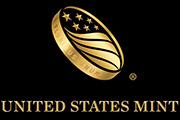Print Friendly
Fact Sheets
- History of Regular Issue United States Coin Denominations.
- The Composition of the Cent.
- What's So Special about the 1943 Copper Penny?
- The Presidents on Our Coins.
- Lincoln's Best Side?
- In God We Trust.
- Why is the Flip Side 'Flipped'?
- Living Men on Coins.
- Women on Coins.
- Did You Know?
- Why Do Some Coins Have Grooves on the Edges?
- Number of Reeds on U.S. Coins.
- The United States Bullion Depository Fort Knox, Kentucky.
More Facts
- George Washington appointed David Rittenhouse, renowned scientist, as the first Director of the United States Mint.
- The first Mint building was the first Federal building erected by the U.S. Government under the Constitution.
- Past Mints have included Dahlonega, GA; Charlotte, NC; New Orleans, LA; and Carson City, NV.
- The first Philadelphia Mint used harnessed horses to drive the machinery that produced coinage.
- A two-cent coin was minted between 1864 and 1873 and was the first coin to bear the motto "In God We Trust."
- Legend holds that George Washington donated some of his personal silver to the Mint for manufacturing early coinage.
- The Mint's first delivery of coins occurred in 1793 and consisted of 11,178 copper cents.
- Mint marks "S", "D", "P", or "W" designate the Mint facility that produced the coin.
- Thomas Jefferson first proposed the decimal currency system that we use today.
- By provision of the Coinage Act of 1965, Mint marks were not used on coins made in 1965, 1966, or 1967.
- The first U.S. commemorative coin was produced in 1892 and featured Christopher Columbus.
- The Mint's original coins were made of gold, silver, and copper.
- In 1943, the content of the one-cent coin was temporarily changed to zinc-coated steel.
- According to the artist, the Indian head on the buffalo nickel (1913-1938) is a composite picture, using features from several models.
- The Philadelphia mint mark appears on each of its coins except the Lincoln cent.
- Sacagawea and Susan B. Anthony are the only women honored on a circulating coin, both on the dollar coin.
- The Philadelphia Mint covers five acres of land.
- The first coin to feature an African-American was the Booker T. Washington Memorial Half Dollar.
- Calvin Coolidge was the first President to have his portrait appear on a coin struck during his lifetime.
- George Washington first appeared on a commemorative dollar, with the Marquis de Lafayette, in 1899.
- In 1893, Queen Isabella of Spain became the first woman to be featured on a commemorative coin.
- All commemorative coins released by the U.S. Mint are legal tender.
- Original gold coinage included $10, $5, and $2.50 denominations.
- The Act of April 2, 1792, which created the Mint, required coins to have "...an impression emblematic of liberty."
- The Roosevelt dime torch, olive branch, and oak branch portray liberty, peace, and strength and independence.
- The donation of $508,316 in gold to create the Smithsonian Institution was assayed in the United States Mint at Philadelphia.
- The first Lincoln cent was produced in 1909 and carried a wheat ears pattern on the back.
- From 1799 to 1873, the Mint was an independent agency reporting directly to the President.
- Before the 2005 nickel, the Lincoln cent was the only circulating coin whose Presidential portrait faced to the right.
- The United States has two mottos that appear on each circulating coin: "In God We Trust" and "E Pluribus Unum."
- Designers' initials can be found on each circulating coin.
- The design on the back of the Kennedy Half Dollar is the presidential coat of arms, part of the Presidential Seal.
- The San Francisco Mint, established in 1854, was housed in one of the few buildings that survived the great earthquake of April 18, 1906.
- Before creation of the United States Mint, "currency" included foreign and colonial currency, livestock, produce, and wampum.
- The Denver Mint opened in 1863 as a U.S. Assay Office.
- The present Philadelphia Mint building opened in 1969 and is the fourth facility that has been located in that city.
